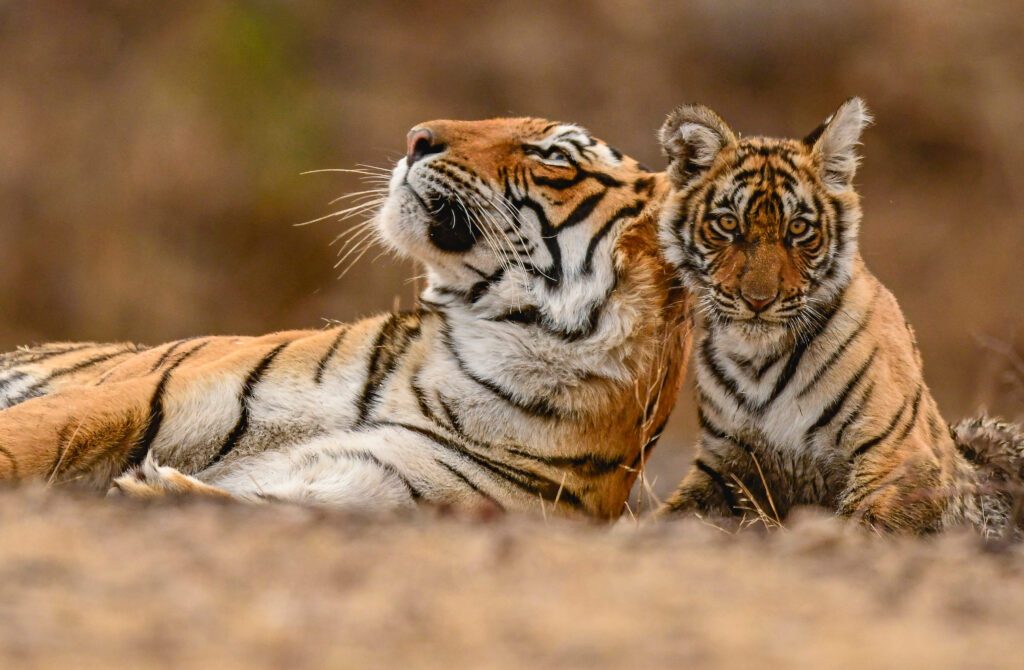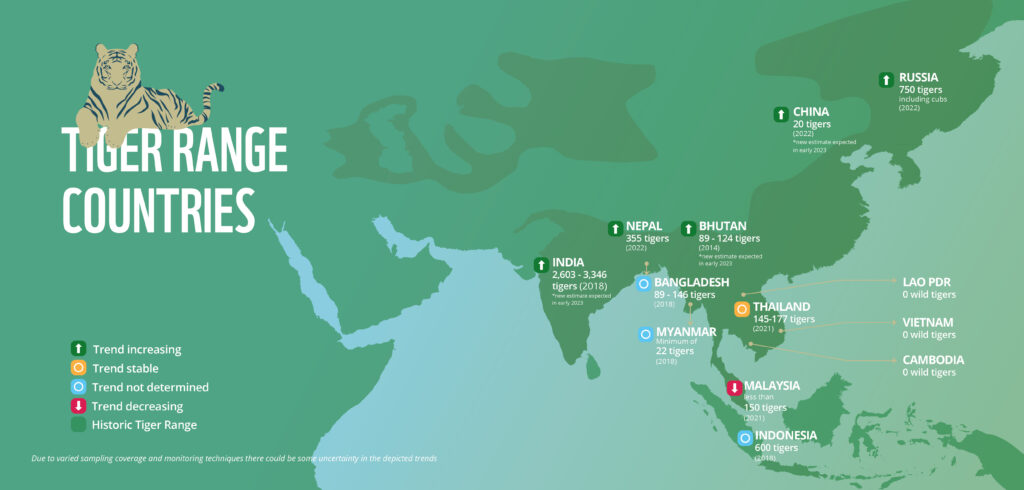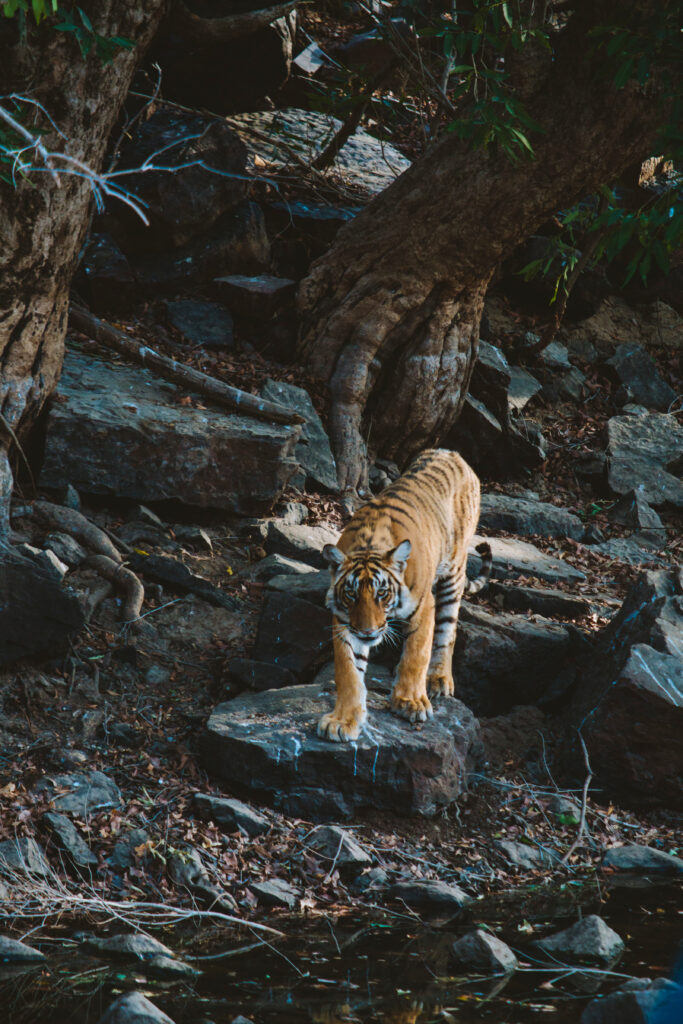Restoring their roar: What do the next 12 years hold for tigers?

If we restore the roar, we can save tigers and so much more. Please give today to have your gift matched.
I was filled with joy when Nepal surpassed our commitment to double the number of tigers between 2010 and 2022. We almost tripled Nepal’s tiger population from 121 to 355! With a lot of hard work, and through your unwavering support over the last 12 years, global wild tiger numbers are increasing.
But while there is growing evidence that the global decline in tigers has finally been reversed — currently there are around 4,500 tigers, up from an all-time low of 3,200 in 2010 — this rare and hard-fought conservation success story is not yet over. The heartbreaking reality is that tigers are still the world’s most threatened big cat.
In fact, in some parts of Asia, there are actually fewer tigers than there were a decade ago.

Even where numbers are on the rise, habitat continues to decline — tigers are restricted to less than five per cent of their historic range! As a result, the “king of the jungle” is being squeezed into shrinking refuges where they are forced into closer contact with people and must compete for space and resources. Local people are losing their livelihoods — and sometimes their lives — to tigers. This is contributing to a rise in human-tiger conflict, poaching and the killing of tigers.
To maintain and grow tiger populations over the long-term, we must safeguard the landscapes where tigers live now and connect tigers to the places they need to be in the future. And we can’t do that without the partnership of local communities.
Onward to the next Year of the Tiger
As we begin the next 12 years of tiger conservation work up to 2034, the next Year of the Tiger in the lunar calendar, we’re focused on more than just increasing tiger numbers. We’re determined to address the interconnected threats of habitat loss and human-tiger conflict that threaten their future.

We’re focused on improving human-tiger coexistence, expanding tiger habitats and ending exploitation. We’ll work hand in hand with the communities living in tiger landscapes, build political will and landscape connectivity, and endeavour to change tiger consumer behaviour to reduce poaching and trafficking.
WWF’s Global Tiger Program has four ambitious goals for 2034:
- Connect and expand tiger habitats: By 2034, we want to see tigers successfully returned to key sites in their historical range, and natural movement corridors secured so tigers can disperse between them.
- Improve coexistence: The benefits of tiger conservation should outweigh the costs of living with tigers. Local communities will be essential partners at the heart of conservation efforts rather than simply actors or beneficiaries of the work.
- End exploitation: By 2034, we want the poaching and trade of — and demand for — tigers and their prey to no longer threaten wild tiger populations.
- Unlock capital: By 2034, political will, financial investments and civil society support for tiger conservation are increased.
The effort it will take to secure a viable future for tigers is daunting, but the opportunity to increase wild populations and bring tigers back to their historic range is incredibly inspiring.
But to keep numbers heading in the right direction, we need your help to raise the much-needed funds to carry out this plan. I’m pleased to let you know that from now until May 19, your donation will be matched.
With you by our side, these big, audacious goals can be achieved. Long-lasting tiger conservation is possible. Together, we can restore their roar.


